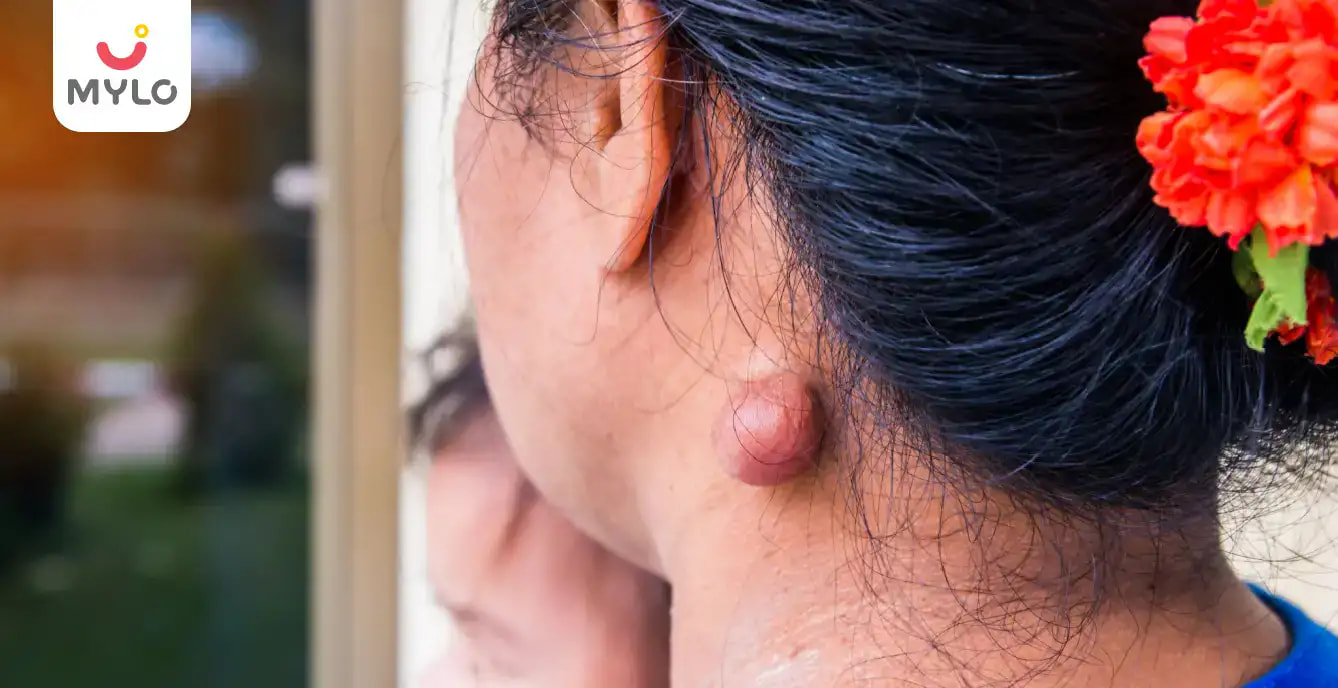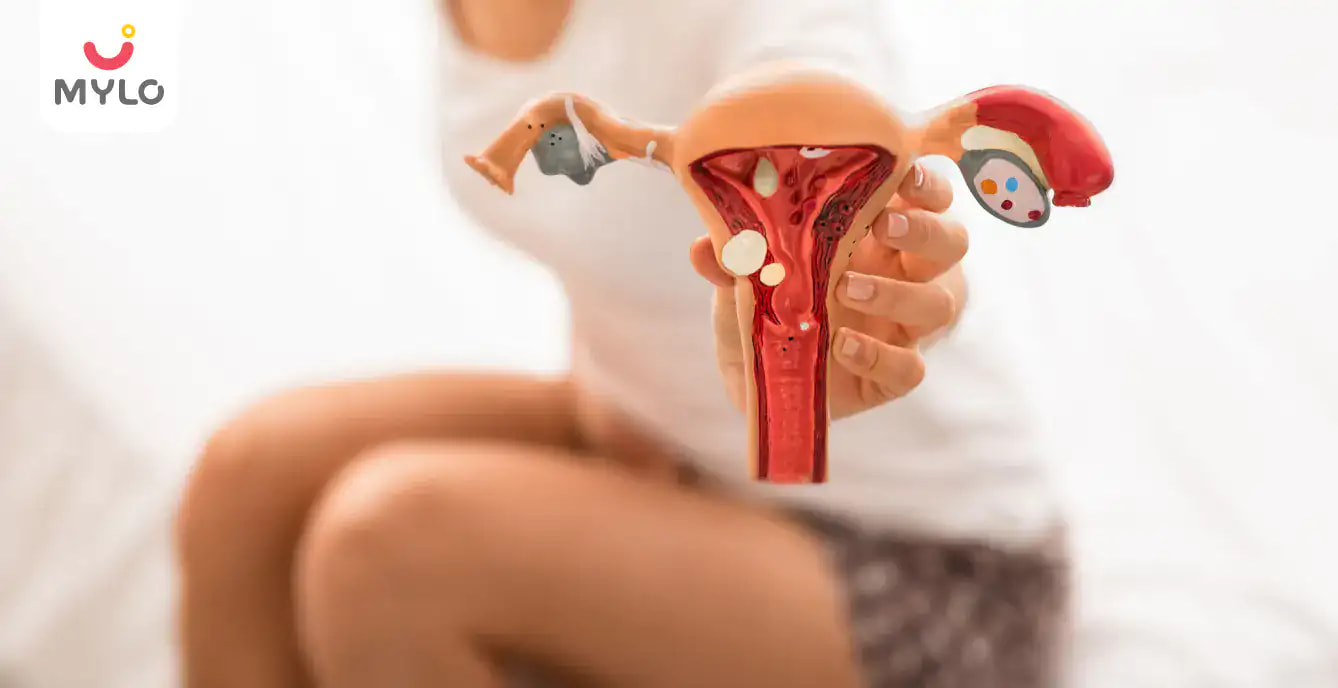Home

Skin Problems

What is Sebaceous Cyst: Causes, Symptoms & Treatment
In this Article

Skin Problems
What is Sebaceous Cyst: Causes, Symptoms & Treatment
Updated on 3 November 2023
Sebaceous cysts are small, painless lumps that form under the skin. They are usually harmless and can occur anywhere on the body, but are most commonly found on the face, neck, and trunk. While they are not dangerous, they can be unsightly and uncomfortable for some people.
In this article, we will discuss the causes, symptoms, and treatment options for sebaceous cysts. Understanding what causes sebaceous cysts and the symptoms they produce can help individuals identify and manage them effectively.
What is a Sebaceous Cyst?
A sebaceous cyst is a noncancerous, closed sac that forms under the skin. It is filled with oily or waxy material and can occur anywhere on the body, but is most commonly found on the face, neck, and trunk. Sebaceous cysts are typically benign and do not require treatment unless they become symptomatic or are causing cosmetic concerns. They can be caused by a ruptured follicle linked to acne, a sebaceous duct that doesn't grow correctly, injury to the area, or sometimes for no clear reason.
If a cyst becomes red or painful, treatment may be necessary, such as placing a warm compress over the area, draining it, injecting it with steroid medicine, or surgically removing it.
You may also like: What is acne & how can you get rid of it from the face?
Causes of Sebaceous Cyst
Sebaceous cyst is formed from the sebaceous gland present in our body. Sebaceous glands secrete oil which form a coating over hair and skin and develops as a cyst. Cysts occur when the passage from which the oil can pass has been damaged or blocked. This happens if there is any trauma to that area.
The trauma can be a scratch, acne, surgical wound, or skin disease. The cyst develops very slowly. It can be a month or two after you experience trauma in that area.
Other causes of sebaceous cyst include the following:
- Damage to the cells during any surgery
- Mishappen or deformed ducts
- Genetic reasons such as basal cell nerves syndrome or Gardner's syndrome.
You may also like: Top 10 Health Issues Related To Women
Symptoms of a Sebaceous Cyst
Symptoms of a sebaceous cyst can include a small, painless lump beneath the skin that grows slowly and is often found on the face, neck, or trunk. Sebaceous cysts are typically benign and do not require treatment unless they become symptomatic or are causing cosmetic concerns.
However, if a cyst becomes infected, symptoms may include skin redness, tenderness, and foul-smelling drainage. Other symptoms of a sebaceous cyst that may require medical attention include
- cyst with a diameter larger than 5 centimeters
- a fast rate of reoccurrence after being removed
- signs of infection such as redness
If you experience any of these symptoms, it is recommended to seek medical attention from a healthcare provider.
You may also like: Here are Some Skin Problems That Require Urgent Attention
Common Tests Used For Identifying a Sebaceous Cyst
A sebaceous cyst can be diagnosed using one of the following methods:
1) CT Scans
CT scan can help your doctor examine the characteristics of your cyst and find out the best way to treat it.
2) Ultrasounds
An ultrasound can help in identifying the contents of the cyst.
3) Punch biopsy
Punch biopsy involves taking out a small amount of tissue from the cyst to examine in a laboratory for any signs of cancer.
You may also like: Is Tea Tree Oil Helpful in Getting Rid of Acne From the Skin?
Treatment of a Sebaceous Cyst
Your doctor can treat it by draining the pus out of the cyst or removing it through surgery. The best treatment is to remove it by surgery because the risk of recurrence is higher in other treatments. Doctors usually adopt one of the following methods for removal of a sebaceous cyst:
1) Conventional wide excision
This completely removes the cyst by surgery, but it may leave a long scar. There is no chance of recurrence with this surgery.
2) Minimal excision
This method causes minimal scarring, but there might be a risk of getting the cyst again.
3) Punch biopsy excision
With the help of a laser, a small hole is made and contents of the cyst are drained completely.
After the treatment, the doctor gives you an antibiotic ointment to prevent infection. You have to use this until your healing process is completed. You can also ask for scar cream from your doctor so that if any surgical scars are left, they can be reduced.
Prevention of Sebaceous Cysts
The best thing you can do to prevent a sebaceous cyst is to avoid causing any traumas or stress to the affected area that may cause it. Avoid getting hit or scratched. If you find any acne, do get it treated by a dermatologist. There are no medicines to prevent sebaceous cysts. You can control it from recurrence after surgery. You must apply antibiotic ointments after the surgery to prevent any infection.
Conclusion
Sebaceous cysts are not cancerous or dangerous but can become very large, painful and uncomfortable, if left untreated. If you get complete surgical removal, there is only a 1% chance of reoccurrence of the cyst.
References
-
Lydia Krause .December 10 2021. Sebaceous Cyst: Causes, Symptoms, Treatments, and More
-
Johns Hopkins Team, Sebaceous Cysts.



Written by
Madhavi Gupta
Dr. Madhavi Gupta is an accomplished Ayurvedic doctor specializing in Medical content writing with an experience of over 10 years.
Read MoreGet baby's diet chart, and growth tips

Related Articles
Related Questions
Hello frnds..still no pain...doctor said head fix nhi hua hai..bt vagina me pain hai aur back pain bhi... anyone having same issues??

Kon kon c chije aisi hai jo pregnancy mei gas acidity jalan karti hain... Koi btayega plz bcz mujhe aksar khane ke baad hi samagh aata hai ki is chij se gas acidity jalan ho gyi hai. Please share your knowledge

I am 13 week pregnancy. Anyone having Storione-xt tablet. It better to have morning or night ???

Hlo to be moms....i hv a query...in my 9.5 wk i feel body joint pain like in ankle, knee, wrist, shoulder, toes....pain intensity is high...i cnt sleep....what should i do pls help....cn i cosult my doc.

Influenza and boostrix injection kisiko laga hai kya 8 month pregnancy me and q lagta hai ye plz reply me

RECENTLY PUBLISHED ARTICLES
our most recent articles

Diet & Nutrition
গর্ভাবস্থায় আলুবোখরা: উপকারিতা ও ঝুঁকি | Prunes During Pregnancy: Benefits & Risks in Bengali

Diet & Nutrition
গর্ভাবস্থায় হিং | ঝুঁকি, সুবিধা এবং অন্যান্য চিকিৎসা | Hing During Pregnancy | Risks, Benefits & Other Treatments in Bengali

Women Specific Issues
স্তনের উপর সাদা দাগ: লক্ষণ, কারণ এবং চিকিৎসা | White Spots on Nipple: Causes, Symptoms, and Treatments in Bengali

Diet & Nutrition
গর্ভাবস্থায় পোহা: উপকারিতা, ধরণ এবং রেসিপি | Poha During Pregnancy: Benefits, Types & Recipes in Bengali

Diet & Nutrition
গর্ভাবস্থায় মাছ: উপকারিতা এবং ঝুঁকি | Fish In Pregnancy: Benefits and Risks in Bengali

Diet & Nutrition
গর্ভাবস্থায় রেড ওয়াইন: পার্শ্ব প্রতিক্রিয়া এবং নির্দেশিকা | Red Wine During Pregnancy: Side Effects & Guidelines in Bengali
- ইনার থাই চ্যাফিং: কারণ, উপসর্গ এবং চিকিৎসা | Inner Thigh Chafing: Causes, Symptoms & Treatment in Bengali
- গর্ভাবস্থায় ব্রাউন রাইস: উপকারিতা ও সতর্কতা | Brown Rice During Pregnancy: Benefits & Precautions in Bengali
- Velamentous Cord Insertion - Precautions, Results & Safety
- Unlock the Secret to Flawless Skin: 7 Must-Have Qualities in a Face Serum
- Unlock the Secret to Radiant Skin: How Vitamin C Serum Can Transform Your Complexion
- Gender No Bar: 10 Reasons Why Everyone Needs a Body Lotion
- Unlock the Secret to Radiant Skin How to Choose the Perfect Body Lotion for Your Skin Type
- Top 10 Reasons to Apply a Body Lotion After Every Bath
- Communication in Toddlers: Milestones & Activities
- How to Improve Vocabulary for Toddlers?
- A Comprehensive Guide to Understanding Placenta Accreta
- Vulvovaginitis in Toddlers Causes, Symptoms and Treatment
- A Comprehensive Guide to Understanding Cerebral Palsy in Children
- Bitter Taste in Mouth During Pregnancy: Understanding the Causes and Remedies


AWARDS AND RECOGNITION

Mylo wins Forbes D2C Disruptor award

Mylo wins The Economic Times Promising Brands 2022
AS SEEN IN
















- Mylo Care: Effective and science-backed personal care and wellness solutions for a joyful you.
- Mylo Baby: Science-backed, gentle and effective personal care & hygiene range for your little one.
- Mylo Community: Trusted and empathetic community of 10mn+ parents and experts.
Product Categories
baby carrier | baby soap | baby wipes | stretch marks cream | baby cream | baby shampoo | baby massage oil | baby hair oil | stretch marks oil | baby body wash | baby powder | baby lotion | diaper rash cream | newborn diapers | teether | baby kajal | baby diapers | cloth diapers |








